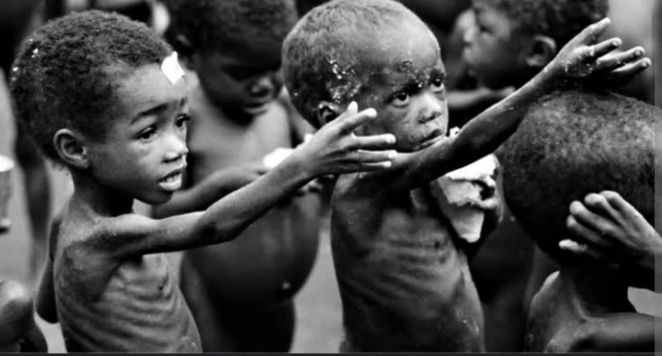Africa continues to face the persistent challenge of hunger and food insecurity. Concerted efforts to address these issues, numerous African countries consistently rank high on the hunger index, highlighting the severity of the crisis.
Out of the 136 countries assessed in the 2023 GHI report, sufficient data were available to calculate GHI scores and rank 125 countries.In the 2023 Global Hunger Index, while some countries have significantly reduced hunger, little progress has been made globally since 2015. Hunger remains serious or alarming in 43 countries.
For countries with askeriks (*), individual scores could not be calculated and ranks could not be determined owing to lack of data. Where possible, these countries were provisionally designated by severity: 1 as low, 2 as moderate, and 3 as alarming.
1. South Sudan — score: 35-49.9*
South Sudan is a nation beleaguered by conflict, political turmoil, and environmental adversities. Decades of internal strife have disrupted agricultural endeavors, resulting in acute food shortages and widespread hunger. Persistent conflicts have displaced millions, exacerbating the humanitarian plight and impeding access to sustenance and fundamental amenities.
2. Burundi — score: 35-49.9*
Following closely behind is Burundi, grappling with analogous challenges of conflict and instability. Political upheaval and economic distress have disrupted the food production and distribution apparatus, leaving a substantial segment of the populace grappling with food insecurity. Scarce resources and deficient infrastructure compound the predicament, exacerbating the nationwide hunger crisis.
3. Somalia — score: 35-49.9*
Somalia occupies the third slot on this distressing list, contending with a confluence of issues including conflict, drought, and poverty. The nation’s susceptibility to recurrent droughts has resulted in crop failures and livestock depletion, imperiling the food security of millions. Concurrently, ongoing strife and insecurity impede humanitarian efforts, thwarting effective mitigation of underlying hunger triggers.
4. Central African Republic — score: 42.3
The Central African Republic persists in confronting significant hurdles in combating hunger, with elevated poverty levels, conflict prevalence, and mass displacement exacerbating food insecurity. Political instability and violence have disrupted agricultural activities and uprooted communities, hampering access to sustenance and vital services for myriad Central Africans.
5. Madagascar — score: 41.0
Despite boasting abundant natural resources and agricultural potential, Madagascar contends with chronic food insecurity, warranting its inclusion among the nations with the highest hunger index scores. Environmental degradation, rampant deforestation, and climatic volatility pose formidable challenges to food production and livelihoods, exacerbating poverty and malnutrition nationwide.
6. Democratic Republic of the Congo — score: 35.7
The Democratic Republic of the Congo struggles with a multifaceted humanitarian crisis driven by conflict, displacement, and systemic inadequacies. Pervasive violence in eastern regions, coupled with governance deficiencies and inadequate infrastructure, hampers agricultural progress and impedes access to sustenance for millions of Congolese citizens.
7. Lesotho — score: 35.5
Lesotho contends with food insecurity stemming from restricted arable land, water scarcity, and reliance on rain-fed agriculture. Economic challenges further exacerbate food insecurity, particularly among vulnerable demographics such as children and women.
8. Niger — score: 35.1
Niger struggles with enduring food insecurity exacerbated by environmental degradation, population expansion, and recurring droughts. Limited market access and agricultural resources, alongside pervasive poverty, heighten susceptibility to food crises, presenting formidable challenges for the government and humanitarian agencies.
9. Chad — score: 34.6
Chad continues confronting food insecurity driven by conflict, climatic fluctuations, and economic hardships. Prevalent poverty, deficient infrastructure, and environmental degradation impede agricultural productivity, exacerbating hunger and malnutrition across various regions.
10. Guinea-Bissau — score: 33.0
Rounding off the list is Guinea-Bissau, a nation struggling with political instability, poverty, and inadequate infrastructure. Limited resource access, including land and water, poses significant impediments to agricultural development, rendering many communities vulnerable to food insecurity and malnutrition.

